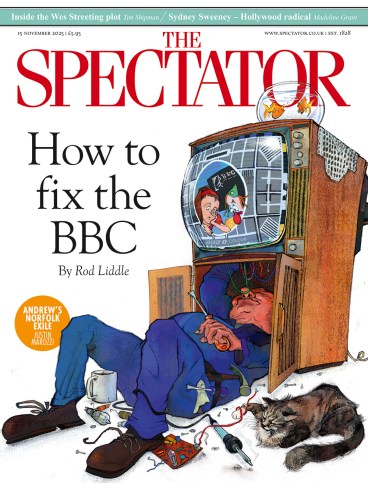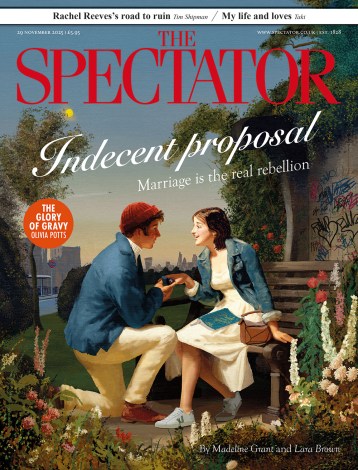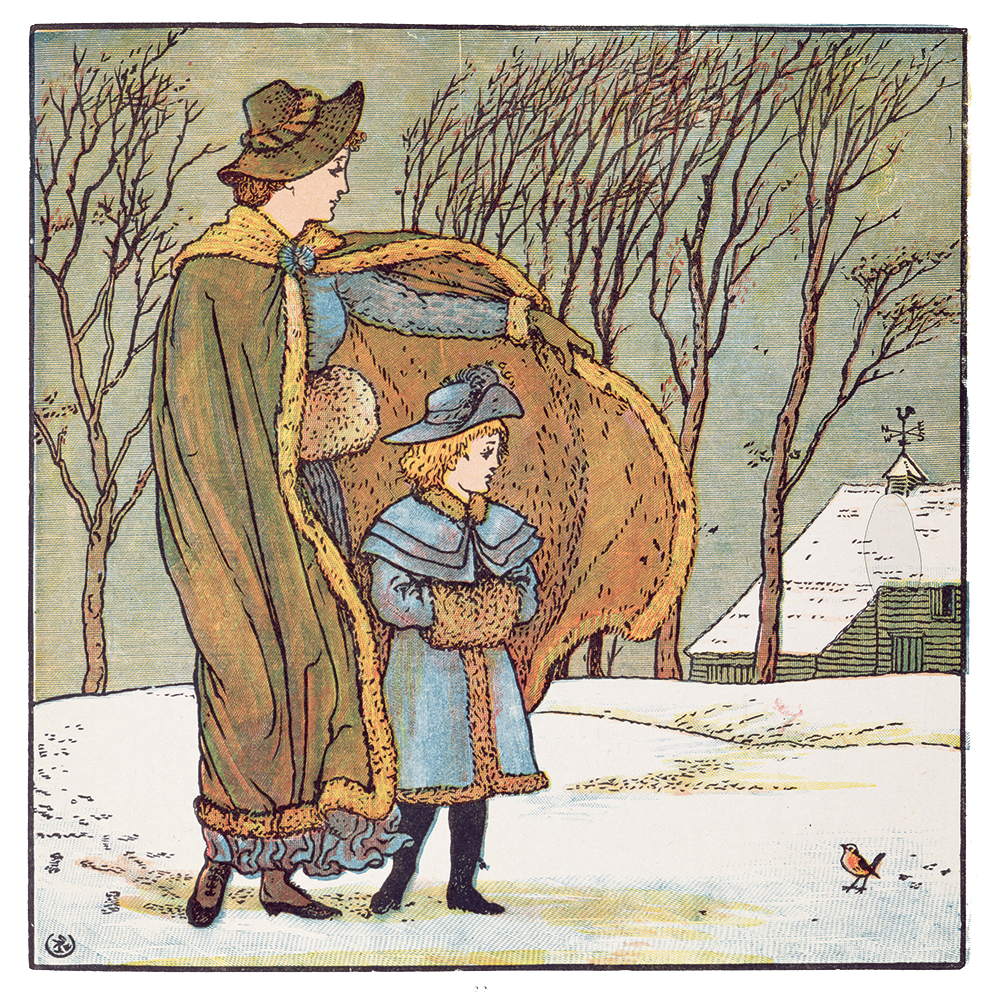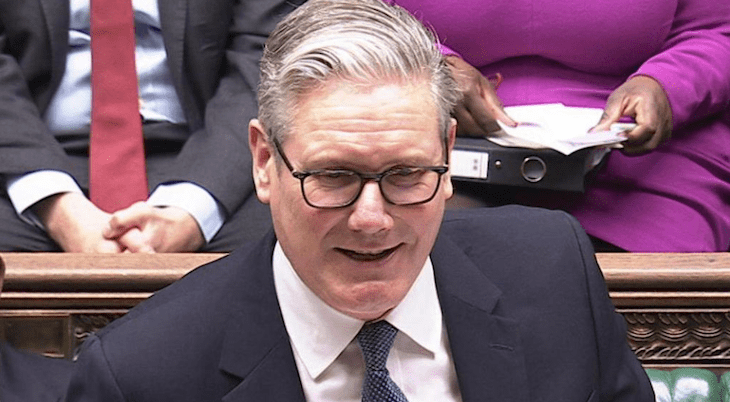
One day, according to a venerable anecdote, an earl pushed his way into Hans Holbein’s London workshop demanding that his portrait be painted straight away. Understandably annoyed, Holbein hit him. This nobleman then asked Henry VIII to punish the painter, but apparently the monarch replied: ‘I can make seven earls (if it pleased me) from seven peasants – but I could not make one Hans Holbeen [sic], or so excellent an artist, out of seven earls.’
Holbein’s pictures must have seemed miraculous when they appeared in Tudor England. In fact they still do. Seeing them is like opening a window into the past and finding it populated by people like those you might pass in the street today. Elizabeth Goldring’s splendid Holbein: Renaissance Master (Paul Mellon Centre, £40), richly illustrated, readable yet highly scholarly, does justice to his achievement.
The materials for the lives of artists are very mixed. Some speak eloquently across the centuries, others are as silent as if they had obeyed Henri Matisse’s injunction: ‘He who would became a painter should first cut out his tongue.’ We only hear Holbein on rare occasions – as when he jotted down ‘felbet’ (or velvet) on a drawing, sending a memo to himself about the sitter’s costume.
Therein lies one of many differences between J.M.W. Turner (1775-1851) and John Constable (1776-1837), the subjects of Nicola Moorby’s dual biography, Turner and Constable: Art, Life, Landscape (Yale, £25). Constable’s voice – eloquent, emotional, sharply caustic – is preserved in numerous letters and lectures. Turner, by contrast, was both secretive and inarticulate. His sprawling, unfinished epic poem, ‘The Fallacies of Hope’, fills the modern reader, as Moorby writes, with ‘a kind of dull horror’.
These two great painters, born a year apart and both specialising in innovatory depictions of landscape, are at once comparable and dissimilar. Working-class Turner became rich and successful early; middle-class Constable struggled long years for recognition. Moorby weaves their lives together deftly, in the process revealing much not only about the two principal characters but also about the art world of late Georgian Britain.
Mrs Kauffman & Madame Le Brun by Franny Moyle (Bloomsbury, £35) is another example of a double biography. Here again the sources are unevenly matched. Late in life Élisabeth Louise Vigée Le Brun (1755-1842) published three volumes of illuminating but sometimes unreliable memoirs – and she had a good story to tell. The favourite painter of Marie-Antoniette, she had a stratospherically successful, if controversial, career in pre-revolutionary France. In 1789, she and her daughter fled to Italy where, in Rome, she met the second subject of this book, Angelica Kauffman (1741-1807).
Kauffman, too, had a highly successful and wandering life, but Vigée Le Brun’s was more rip-roaring, just as her pictures – especially the self-portraits – tend to be the more compelling. Moyle’s engaging exercise in compare-and-contrast reveals much about the difficulties and opportunities faced by woman artists in the 18th century.
Like Turner, Euan Uglow (1932-2000) was a painter of the taciturn type. His own views were clipped and to the point, but his paintings, with their delicate precision and limpid colours, don’t need – indeed defy – dissection in words. Andrew Lambirth has created an intimate portrait of this artist in The Uglow Papers (Modern Art Press, £30), a compilation of interviews, memories and reflections by the painter’s friends, lovers and models. The text is both touching and amusing, while the many reproductions of Uglow’s works quietly make their own case. This is a beautiful book.
William Coldstream Remembered: Portraits of a Painter, compiled and edited by Catherine Coldstream (Sansom & Company, £30), is a similar compilation devoted to an artist whose name is tending to slip from our collective memory. In the postwar years, however, Coldstream (1908-87) was one of the most influential artists in Britain. He had many pupils (Uglow was one) and his painstaking manner of measuring and mapping the subject was taught in art schools up and down the country. He is recalled here by friends, models, pupils and fellow painters.
Coldstream’s early works, such as the murky interior of St Pancras station he produced in 1938, were a blend of fanatical exactitude and delicately dingy romanticism. Panoramas of Lost London: Work, Wealth, Poverty and Change 1870-1945 (Atlantic, £40), a revised and enlarged edition of a popular work by Philip Davies, contains numerous similarly evocative photographs of streets filled with horse-drawn traffic and sooty facades. Not all the buildings have vanished. But the atmospheric grime, and the smoke that caused it, has almost gone.
Sometimes there is a question about exactly where an artist’s greatness lies. As a painter, Walter Crane (1845-1915) was a distinctly mimsy Pre-Raphaelite. But as a creator of children’s books he was one of the most beguiling who has ever lived. The ‘Toy Books’, of which he produced up to four per year in the 1860s and 1870s, are among the most delightful products of the arts and crafts movement. Francesca Tancini’s Walter Crane: Books in Colour (Yale, two volumes, £250), is a monumental and scholarly catalogue of all his illustrations of nursery rhymes and fairy tales.
Lucian Freud took the view that Francisco Goya’s prints and graphic work were ‘enormously more interesting than his paintings’. If that’s the case, then much of the best of the Spanish master is on view in Goya: The Complete Prints (Taschen, £100). Certainly, the inner vision of the artist – his blackly sardonic humour, his fantasy, rage and despair at human cruelty and stupidity – is expressed at full power in these black-and-white images.
Like the rest of us, some artists are travellers – Turner, Hockney, Holbein and even Goya, who ended his life in Bordeaux. Others are what Constable called ‘stay-at-home people’ (as he was himself). In Art on the Move in Renaissance Italy (Paul Holberton, £50), David Landau presents a pioneering and fascinating study of the subject of mobile painters and sculptors, concentrating on the years around 1500.
He devotes a long and absorbingly detailed chapter to Albrecht Dürer’s sojourn in Venice in 1505-7. While staying in the Serenissima, the German master produced remarkable works, including fabulous drawings on blue Venetian paper. He also socialised with Giovanni Bellini and perhaps influenced Giorgione – or possibly it was the other way round.
One of the surprising aspects of prehistoric art is that there’s so much of it. Rock Art and its Legacy in Myth and Art (Bloomsbury, £27) by Christoph Baumer and Therese Weber reveals that the world is full of petroglyphs, or carvings incised into stone, many beautiful and some extremely ancient. But you’d have to be intrepid to see them, since they tend to be scattered over such places as the desolate wastes of the Sahara and the mountains of central Asia. The text is highly scholarly (albeit distinctly chewy) but the pictures are glorious enough to tempt you to set off immediately for the wilds of Kyrgyzstan or arctic Norway.








Comments